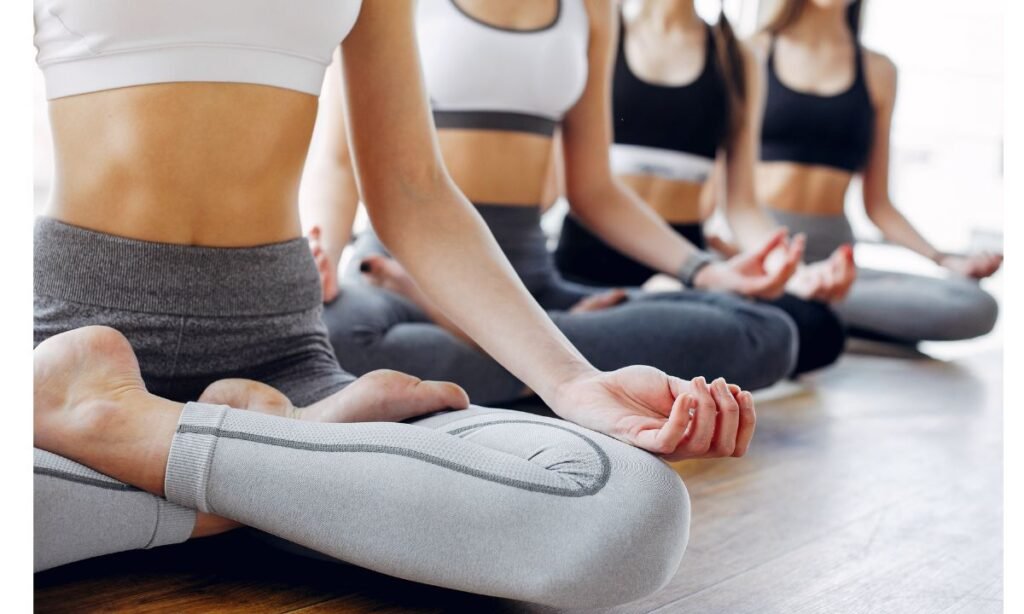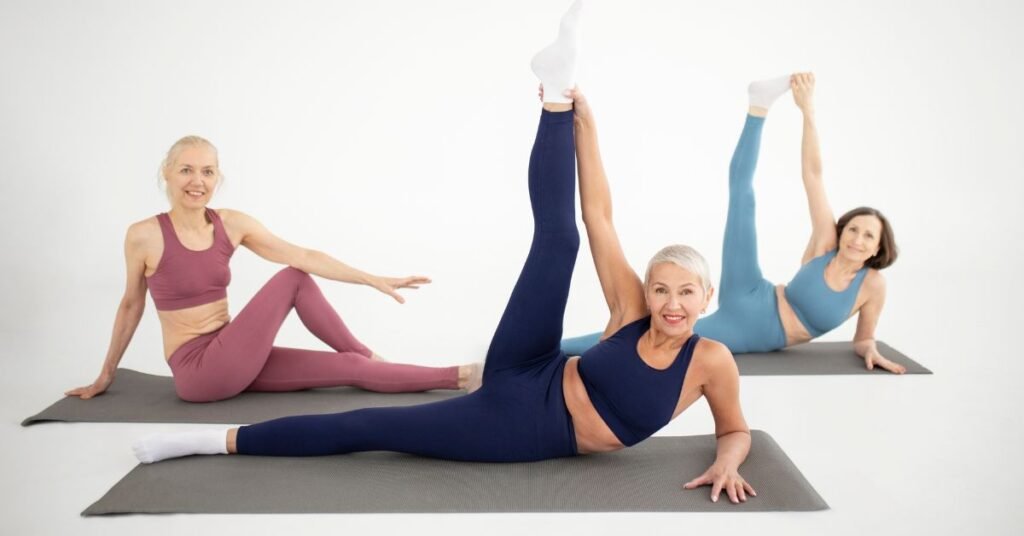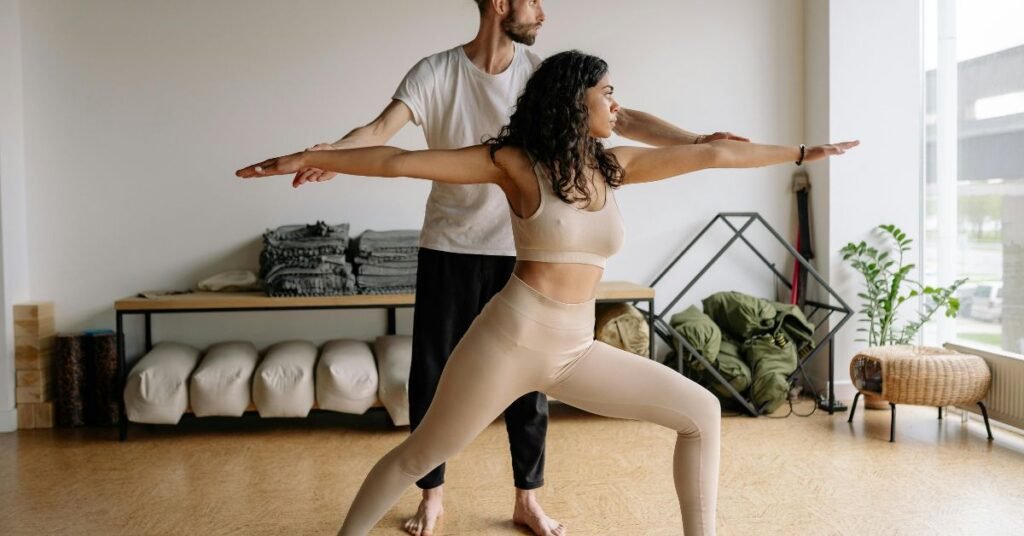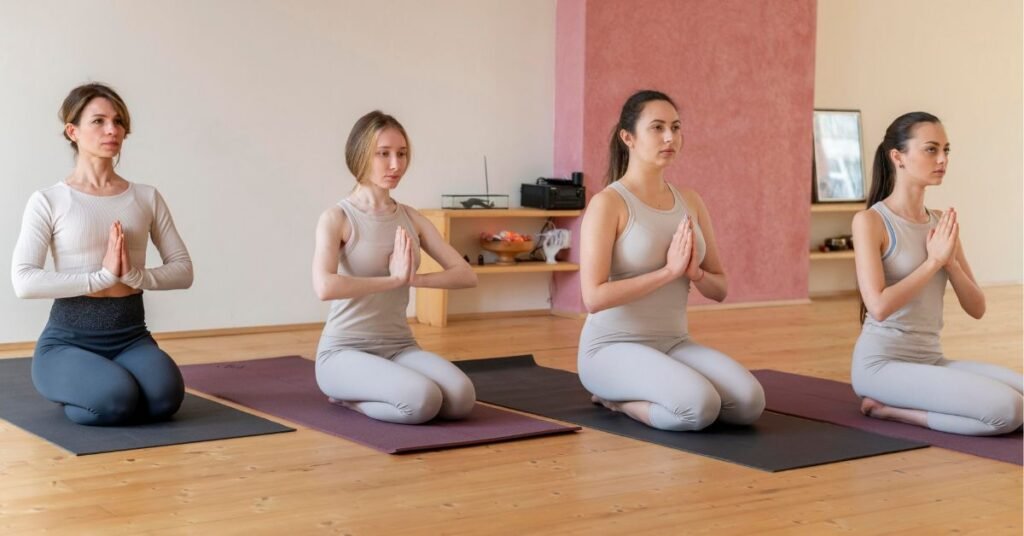Yoga is more than just a form of exercise—it’s a way to cultivate mindfulness, balance, and a connection between the mind, body, and spirit. With so many different types of yoga, it can be overwhelming to figure out which one suits your needs, lifestyle, and goals. Whether you’re new to yoga or looking to diversify your practice, this guide will help you explore the most popular types of yoga, uncover their benefits, and provide tips on how to choose the style that’s best for you.
Finding Your Yoga Fit
So, you’ve decided to give yoga a try, but where do you even begin? The world of yoga is vast, with countless styles, teachers, and practices available. If you’re wondering, “What style of yoga is best for me?” you’re not alone. The key is to find a style that aligns with your personal goals, fitness level, and lifestyle. In this guide, we’ll explore the most popular types of yoga, the benefits they offer, and tips on how to choose the best fit for you. Ready to stretch your body and your mind? Let’s dive in!
The Most Popular Types of Yoga
Yoga comes in all shapes and sizes—some styles focus on flexibility, others on strength or meditation. Here are some of the most popular types of yoga, along with what you can expect from each.
1 Hatha Yoga
What it is:
Hatha yoga is often considered the foundation for many yoga styles. It’s a slow-paced practice that focuses on basic poses, breathing techniques, and alignment. If you’re new to yoga, Hatha is a great starting point.
What to expect:
You’ll move through a series of poses at a gentle pace, with lots of time to focus on proper alignment and breathing.
Who it’s best for:
Beginners who want to develop a solid foundation before moving on to more advanced styles.
Benefits:
- Improved flexibility and strength
- Increased mindfulness
- Stress relief and relaxation
2 Vinyasa Yoga
What it is:
Vinyasa yoga is a more dynamic, flow-based style of yoga where poses are linked together through breath. It’s often described as “flow” yoga and classes are typically faster-paced than Hatha.
What to expect:
Expect to move seamlessly from one pose to another in a fluid sequence. Breath is synchronized with movement, creating a more energetic and invigorating practice.
Who it’s best for:
Those who enjoy a fast-paced workout and want to build strength, flexibility, and endurance.
Benefits:
- Increased cardiovascular endurance
- Full-body strength
- Mental clarity and focus
3 Ashtanga Yoga
What it is:
Ashtanga is a vigorous, fast-paced style of yoga that follows a specific sequence of postures. It’s highly structured and physically demanding, making it a great choice for those looking for a challenging practice.
What to expect:
The practice follows a set sequence, moving through poses in a particular order, often at a quick pace. It incorporates sun salutations, standing poses, seated poses, and finishing poses.
Who it’s best for:
People who are looking for a challenging, athletic practice that builds strength and flexibility quickly.
Benefits:
- Improved cardiovascular health
- Increased strength and flexibility
- Detoxification through sweat
Readmore: 5 Amazing Reasons to Try Hot Yoga
Readmore: The Best Foods for a Yogic Diet
Readmore: Winter Wellness: 12 Yoga Poses to Stay Warm
4 Bikram Yoga
What it is:
Bikram yoga is practiced in a heated room (around 105°F or 40°C) and follows a set sequence of 26 poses. The heat allows for deeper stretching and detoxification through sweat.
What to expect:
You’ll sweat a lot! The class is intense, and the heat helps you loosen up and stretch deeper into poses.
Who it’s best for:
Those who enjoy a physically challenging, sweat-inducing workout and want to detoxify.
Benefits:
- Increased flexibility
- Detoxification
- Enhanced strength and endurance
5 Kundalini Yoga
What it is:
Kundalini yoga combines physical postures, breathing exercises, chanting, and meditation to awaken the “kundalini energy” at the base of your spine.
What to expect:
Expect a mix of dynamic movements, breathing techniques, chanting, and moments of stillness. The goal is to release energy and elevate your consciousness.
Who it’s best for:
People are interested in exploring the spiritual side of yoga and seeking a deeper connection with themselves.
Benefits:
- Spiritual awakening and growth
- Stress relief
- Increased energy and vitality
6 Yin Yoga
What it is:
Yin yoga is a slow-paced style that involves holding poses for several minutes to stretch deep into the connective tissue. It’s the opposite of fast-paced practices like Vinyasa and Ashtanga.
What to expect:
Long holds in deep stretches with a focus on deep relaxation. It’s great for improving flexibility and mindfulness.
Who it’s best for:
Those who want a gentle practice to improve flexibility, balance, and relaxation.
Benefits:
- Increased flexibility
- Better joint health
- Deep relaxation and stress relief
7 Restorative Yoga
What it is:
Restorative yoga is all about relaxation and rejuvenation. The practice involves long-held, gentle poses supported by props like blankets and bolsters.
What to expect:
A very slow pace with a focus on relaxation and mindful breathing. Poses are held for long periods, allowing the body to fully relax and heal.
Who it’s best for:
People looking for deep relaxation, stress relief, and recovery from injury or fatigue.
Benefits:
- Deep relaxation
- Stress reduction
- Improved sleep and recovery
Readmore: 11 Poses to Soothe Your Neck and Shoulders
Readmore: 5 Person Yoga Poses
What Style of Yoga Is Best for Me?
Choosing the right style of yoga depends on several factors, including your fitness level, personal goals, and personality. Here’s a quick guide to help you make your decision.
1 Your Fitness Level
If you’re new to yoga, starting with a gentle practice like Hatha or Restorative yoga might be the best choice. If you’re more experienced or looking for a physical challenge, Vinyasa or Ashtanga could be better options.
2 Your Goals: Flexibility, Strength, or Stress Relief?
Consider what you hope to achieve with your yoga practice. If you want to build strength and endurance, Ashtanga or Bikram yoga might be the best choice. If your main goal is to reduce stress, Yin or Restorative yoga will help you relax and recharge.
3 Consider Your Personality
Your personality can also influence which style suits you best. If you’re an active person who enjoys a fast pace, Vinyasa or Ashtanga might feel energizing. If you prefer a more meditative, slower pace, Yin or Kundalini yoga could be a better fit.
The Many Benefits of Yoga
Yoga isn’t just about stretching or building muscle—its benefits go far beyond the mat. Let’s take a closer look at the physical, mental, and emotional benefits of yoga.
1 Physical Benefits
- Increased flexibility
- Improved strength and balance
- Better posture
- Detoxification through sweating (in heated classes)
- Enhanced joint health
2 Mental and Emotional Benefits
- Stress reduction
- Improved concentration and focus
- Greater emotional stability
- Boosted mood and mental clarity
3 Spiritual Benefits
- A deeper sense of connection with yourself
- Increased mindfulness and self-awareness
- Spiritual growth and awakening (especially with practices like Kundalini)
Helpful Tips for Starting Your Yoga Journey
Starting your yoga practice can feel intimidating, but with the right approach, it can become a transformative and enjoyable experience.
1 Finding the Right Class or Teacher
Look for a class that aligns with your goals and preferences. A good teacher will make you feel comfortable and guide you through each pose with clear instructions. Don’t be afraid to ask questions or try different teachers until you find the right fit.
2 What to Wear and Bring to Class
Wear comfortable, breathable clothing that allows you to move freely. A yoga mat is essential, and if you’re attending a heated class (like Bikram), bring a towel and water bottle.
3 The Importance of Consistency
Like any fitness routine, consistency is key. Aim to practice regularly, even if it’s just for a few minutes each day. Over time, you’ll start to notice the physical and mental benefits of your practice.
Readmore: Yoga Poses for 4 Persons
Readmore: The Ultimate Guide to 3-Person Yoga Poses
Conclusion: Finding Your Inner Peace
Yoga is a deeply personal journey, and finding the style that suits you best can take some time and experimentation. Whether you’re looking to build strength, improve flexibility, reduce stress, or explore your spirituality, there’s a style of yoga that can help you reach your goals. So, take a deep breath, roll out your mat, and begin your journey to inner peace.
With so many different types of yoga to explore, there’s something for everyone. Start slow, listen to your body, and most importantly, enjoy the journey!
FAQs
Q1: What is the best type of yoga for beginners?
Hatha yoga is great for beginners due to its slow pace and focus on basic poses.
Q2: What style of yoga is best for weight loss?
Vinyasa yoga, Ashtanga yoga, and Bikram yoga are great for weight loss due to their intensity and calorie-burning nature.
Q3: Is yoga good for flexibility?
Yes, Yin yoga, Hatha yoga, and Vinyasa yoga all improve flexibility over time.
Q4: What yoga style is best for stress relief?
Yin yoga, Restorative yoga, and Kundalini yoga are excellent for relaxation and stress relief.
Q5: Can yoga build strength?
Yes, styles like Ashtanga, Vinyasa, and Bikram yoga build strength through challenging poses.
Q6: Can yoga help with back pain?
Yes, Hatha yoga and Yin yoga help with back pain by promoting flexibility and proper alignment.

Sonu is a passionate yoga teacher with over 6+ years of experience helping individuals find balance, strength, and inner peace through the transformative power of yoga. As the creator of Pure Yoga Vibes, Sonu shares expert insights, inspiring practices, and a wealth of knowledge to support your wellness journey. Dedicated to creating a space for growth and mindfulness, Sonu’s mission is to make yoga accessible and enjoyable for everyone. For inquiries or collaborations, feel free to reach out at contact@pureyogavibes.com.



